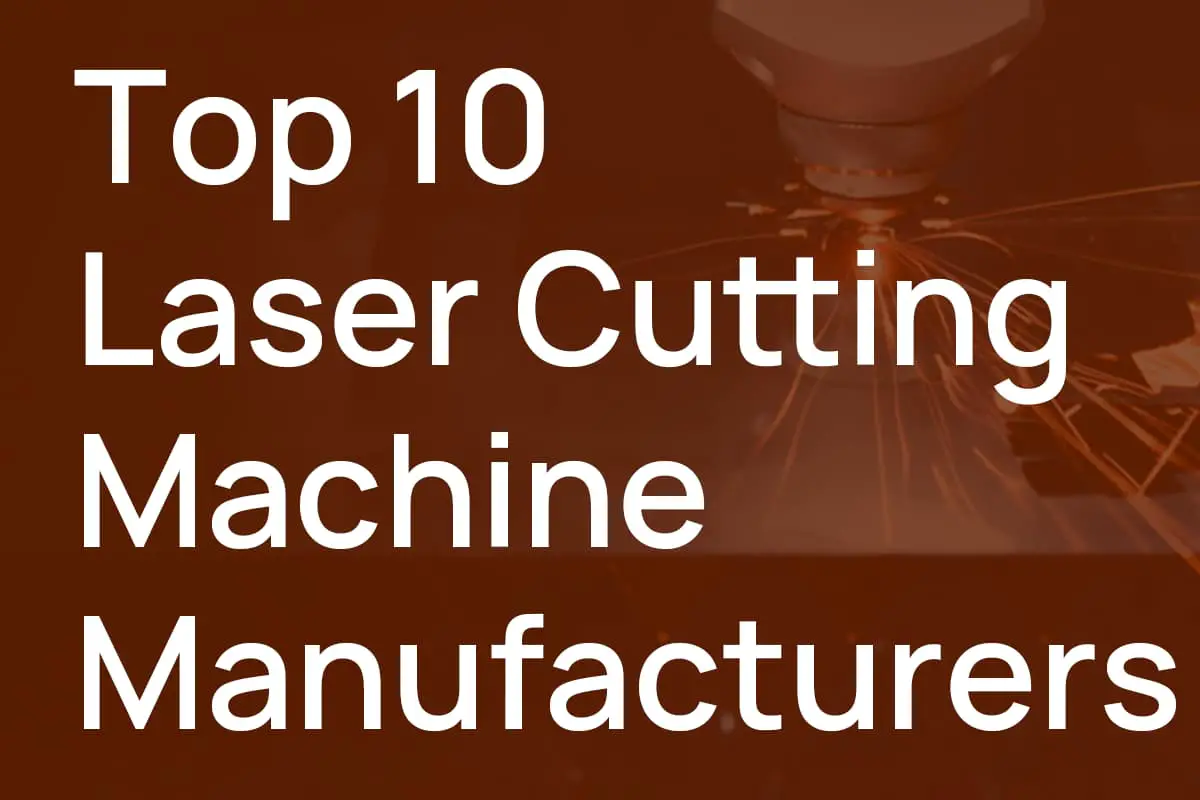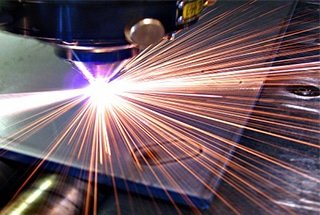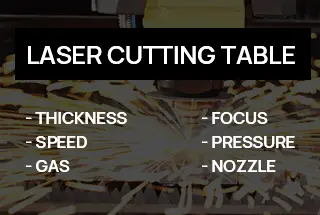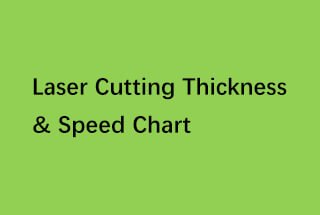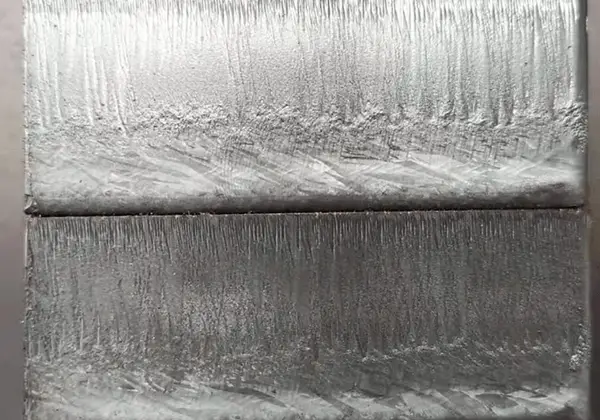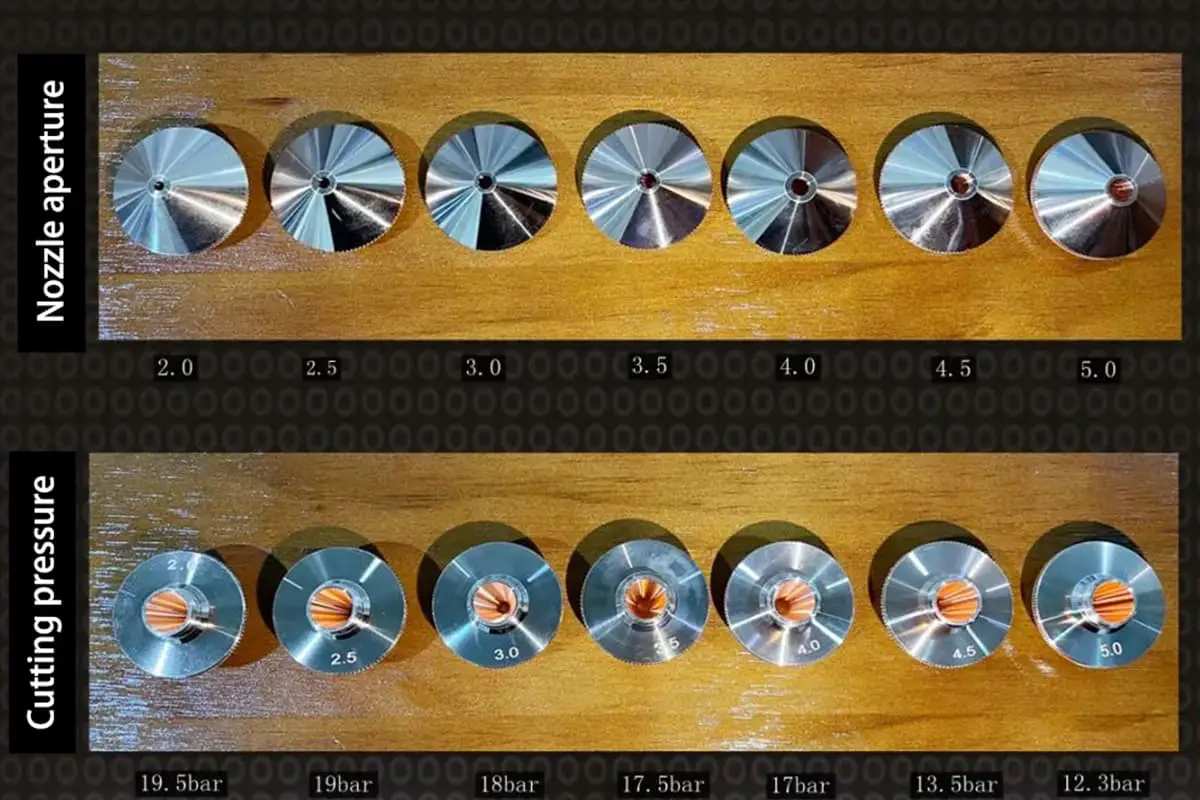
다양한 소재에 복잡한 디자인이 어떻게 이렇게 정밀하게 커팅되는지 궁금한 적이 있나요? 이 글에서는 레이저 커팅의 기술과 응용 분야를 살펴보며 레이저 커팅의 매혹적인 세계를 소개합니다. 마지막에는 이 기술이 금속에서 섬유에 이르기까지 모든 것을 어떻게 형성하고 무한한 가능성의 미래를 약속하는지 이해하게 될 것입니다.
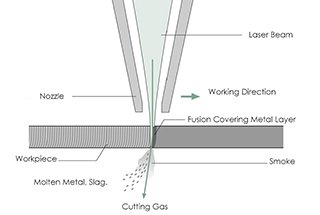
1970년대에 처음 소개된 레이저 커팅은 현대 산업 생산에 혁명을 일으켰습니다. 이 다목적 기술은 이제 판금, 플라스틱, 유리, 세라믹, 반도체, 섬유, 목재, 종이 등 다양한 소재의 정밀 절단에 광범위하게 사용되고 있습니다. 재료 낭비를 최소화하면서 깨끗하고 정확하게 절단할 수 있는 능력 덕분에 다양한 제조 분야에서 없어서는 안 될 도구로 자리 잡았습니다.
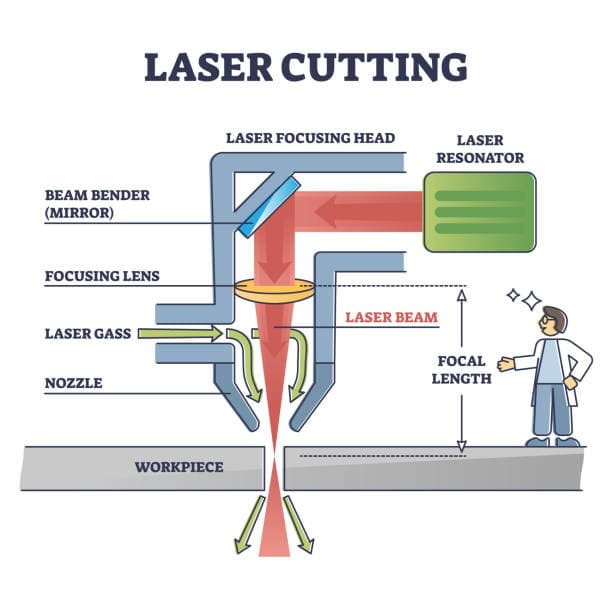
앞으로 레이저 절단은 특히 정밀 가공 및 미세 가공 분야에서 크게 성장할 것으로 예상됩니다. 이러한 확장은 빔 품질 개선, 더 높은 출력, 향상된 제어 시스템과 같은 레이저 기술의 발전에 힘입어 이루어지고 있습니다. 이러한 발전으로 제조업체는 복잡한 절단 작업에서 전례 없는 수준의 정확성과 효율성을 달성할 수 있게 되었습니다.
레이저 커팅의 기본 원리는 고에너지 빛을 집중적으로 적용하여 재료를 빠르게 가열하고 가공하는 것입니다. 집중된 레이저 빔이 공작물과 상호 작용하면 국부적으로 강렬한 열이 발생하는 영역이 생성됩니다. 이로 인해 재료의 특성과 레이저 파라미터에 따라 재료가 녹거나 기화하거나 두 가지 프로세스가 결합된 형태로 가공됩니다.
레이저 빔이 공작물을 관통하면 실제 절단 프로세스가 시작됩니다. 빔은 미리 정해진 윤곽을 따라 이동하면서 경로에 있는 재료를 지속적으로 녹이거나 기화시킵니다. 절단 품질과 효율성을 향상시키기 위해 고압 보조 가스(일반적으로 질소, 산소 또는 압축 공기)가 레이저 빔과 동축으로 연결됩니다. 이 가스 분사는 여러 가지 중요한 기능을 수행합니다:
그 결과 절단된 부분과 남은 재료 사이에 정밀하고 좁은 절개선이 생깁니다. 이러한 커프 라인의 폭은 매우 작으며, 종종 포커싱된 레이저 빔 자체의 직경과 거의 일치합니다. 이러한 높은 수준의 정밀도 덕분에 복잡한 디자인과 엄격한 공차가 가능하므로 레이저 절단은 대규모 산업 제조부터 섬세한 미세 가공 작업에 이르기까지 다양한 분야에 이상적입니다.
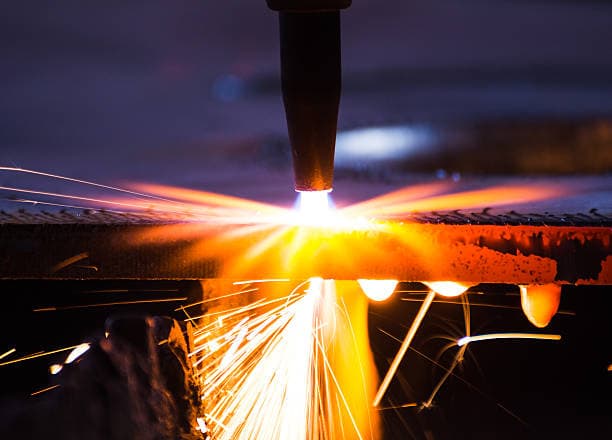
산소 연료 절단이라고도 하는 화염 절단은 주로 저탄소 및 중탄소 강재 절단에 널리 사용되는 열 절단 공정입니다. 이 기술은 연료 가스(일반적으로 아세틸렌, 프로판 또는 천연가스)와 순수 산소를 조합하여 고온의 불꽃을 생성하고 절단 공정을 용이하게 합니다.
이 방법에서는 먼저 연료 가스 불꽃을 사용하여 금속을 발화 온도(연강의 경우 약 870°C 또는 1600°F)까지 예열합니다. 금속이 이 온도에 도달하면 고순도 산소 스트림이 가열된 영역으로 향합니다. 그런 다음 일반적으로 3~6bar(30~60psi) 범위의 가압된 산소가 증가하여 절단 작업을 시작하고 지속합니다.
절단 영역에서 가열된 금속은 산소와 빠른 발열 반응을 일으켜 연소 및 산화됩니다. 이 산화 반응은 예열 불꽃 에너지의 최대 5배에 달하는 상당한 양의 추가 열을 발생시킵니다. 그 결과 용융된 산화물과 금속이 산소 제트의 운동 에너지에 의해 커프에서 배출되어 깔끔한 절단이 이루어집니다.
화염 절단에서 화학 반응과 열 발생은 몇 가지 이점을 제공합니다:
하지만 화염 절단은 주로 산화 가능성이 높은 철 소재에 국한된다는 점에 유의해야 합니다. 다른 금속을 절단하거나 더 높은 정밀도를 달성하려면 플라즈마 또는 레이저 절단과 같은 대체 방법이 더 적합할 수 있습니다.
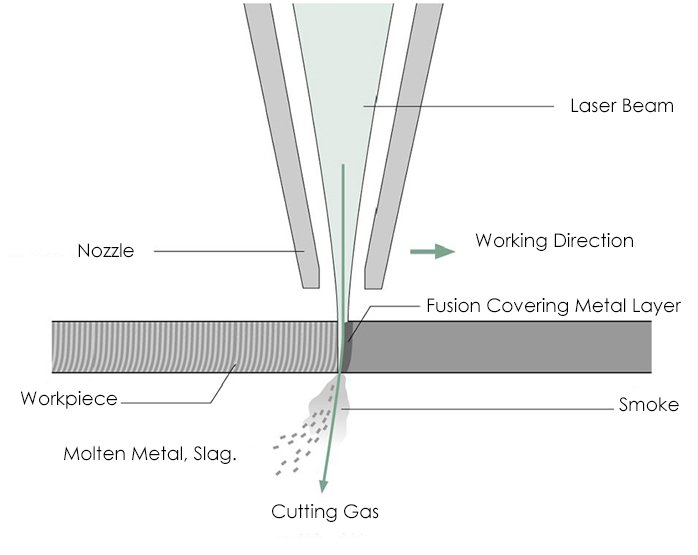
그림 1 레이저 빔이 공작물을 녹이는 동안 절단 가스가 절개 부위의 용융 재료와 슬래그를 날려 보냅니다.
용융 절단이라고도 하는 퓨전 절단은 정밀 금속 제조에 널리 사용되는 정교한 열 공정으로, 고급 세라믹을 비롯한 다른 용융 가능한 재료로 확장할 수 있습니다. 이 기술은 일반적으로 레이저 또는 플라즈마와 같은 고에너지 열원을 사용하여 재료를 빠르게 녹입니다. 이 공정은 일반적으로 질소 또는 아르곤과 같은 고압 가스 분사를 통해 2~20bar(200~2000kPa) 범위의 압력으로 커프(절단 경로)를 통과하여 강화됩니다.
절단 가스로 질소와 아르곤을 선택하는 것은 매우 중요하며 재료와 원하는 결과에 따라 달라집니다. 두 가스 모두 불활성 기체이므로 커프에서 용융된 재료와 화학적으로 반응하지 않습니다. 이러한 불활성은 두 가지 중요한 기능을 수행합니다:
질소는 비용 효율성과 산화물 없는 모서리를 생성할 수 있기 때문에 연강 및 스테인리스강 절단에 선호되는 경우가 많습니다. 밀도가 높은 아르곤은 일반적으로 반응성이 높은 재료 또는 항공우주 분야와 같이 초고순도 절단이 필요한 경우에 사용됩니다.
보조 가스의 압력은 절단 품질, 커프 폭, 절단 속도에 영향을 미치는 중요한 파라미터입니다. 일반적으로 압력이 높을수록 절단 속도가 빨라지고 더 좁은 커프를 생성할 수 있지만 절단 바닥에 드로스가 형성될 위험이 높아질 수 있습니다. 레이저 출력 및 절단 속도와 같은 다른 매개변수와 함께 가스 압력을 최적화하는 것은 산업용 애플리케이션에서 생산성과 절단 품질 간에 원하는 균형을 달성하는 데 필수적입니다.
압축 공기 절단은 재료에 따라 일반적으로 최대 3~6mm 두께의 얇은 금속판에 적합한 효율적인 열 절단 공정입니다. 이 방법은 고압 공기 흐름을 사용하여 절단 영역에서 용융 금속을 제거합니다.
이 공정에서는 5~7bar(500~700kPa) 압력의 압축 공기가 특수 설계된 노즐을 통해 전달됩니다. 이 고속 공기 흐름은 산소 연료 불꽃 또는 플라즈마 아크에 의해 생성된 용융 금속을 효과적으로 배출하여 깨끗하고 좁은 절단면을 만들어냅니다.
압축 공기는 약 78%의 질소, 21%의 산소, 1%의 기타 가스로 구성되어 있기 때문에 절단 메커니즘은 주로 열에 의해 이루어집니다. 산소 함량은 발열 반응에 기여하여 절단 효율을 높이고 질소는 불활성 기체로 작용하여 절단 모서리가 과도하게 산화되지 않도록 보호합니다.
압축 공기 절단의 주요 장점은 다음과 같습니다:
그러나 재료 두께가 증가하면 압축 공기 절단 효과가 감소하고 플라즈마 또는 레이저 절단과 같은 대체 방법이 더 두꺼운 판재에 더 적합할 수 있다는 점에 유의해야 합니다.

최적의 파라미터를 선택하면 플라즈마 보조 레이저 융착 절단 중에 커프 내에 플라즈마 구름이 형성됩니다. 이 구름은 이온화된 금속 증기와 이온화된 절단 가스로 구성되어 절단 공정을 향상시키는 매우 에너지적인 환경을 조성합니다.
플라즈마 구름은 효율적인 에너지 전달 매체로 작용하여 CO2 레이저 복사를 흡수하고 이를 공작물의 국부적인 열로 변환합니다. 이 메커니즘은 에너지 결합 효율을 크게 개선하여 금속 용융을 가속화하고 절단 속도를 높입니다. 따라서 이 고급 기술을 고속 플라즈마 절단이라고도 합니다.
레이저와 플라즈마 간의 시너지 효과로 특히 두꺼운 재료(6mm 이상)에서 기존 레이저 절단보다 최대 300% 빠른 절단 속도를 구현할 수 있습니다. 또한 플라즈마 지원 공정은 드로스 형성을 줄이고 열 영향 영역(HAZ)을 최소화하여 절단 품질을 개선할 수 있습니다.
플라즈마 보조 융착 절단은 CO2 레이저 시스템에 맞게 특별히 맞춤화되었다는 점에 유의해야 합니다. 플라즈마 구름은 고체 레이저(예: 파이버 또는 디스크 레이저)에 투명하게 유지되므로 이러한 레이저 유형에서는 이 기술이 효과적이지 않습니다. 이러한 제한은 플라즈마의 파장 의존적 흡수 특성 때문입니다.
플라즈마 지원 절단을 최적화하기 위한 주요 공정 파라미터는 다음과 같습니다:
제조업체는 이러한 매개변수를 미세 조정하여 다양한 재료와 두께에 대해 최적의 절단 성능을 달성하고 고품질의 절단 품질을 유지하면서 생산성을 극대화할 수 있습니다.
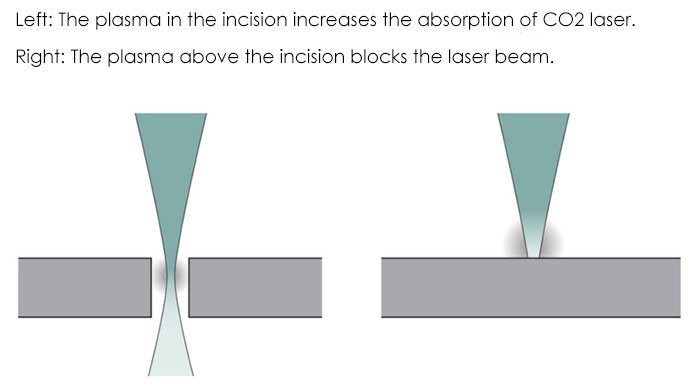
가스화 절단은 재료를 기화시켜 주변 재료에 대한 열 효과를 최소화합니다.
지속적인 CO2 레이저 가공 는 얇은 플라스틱 필름이나 목재, 종이, 폼과 같은 녹지 않는 재료와 같이 열이 적고 흡수율이 높은 재료를 증발시킬 때 이러한 효과를 얻을 수 있습니다.
초단파 펄스 레이저는 이 기술을 다른 재료에도 적용할 수 있습니다.
금속의 자유 전자가 레이저를 흡수하여 크게 가열됩니다.
레이저 펄스는 용융 입자 및 플라즈마와 반응하지 않으며, 주변 물질에 에너지를 열로 전달하지 않고 직접 승화시킵니다.
명백한 열 효과는 없습니다. 피코초 재료의 펄스 절제 및 융합이나 버 형성이 발생하지 않습니다.
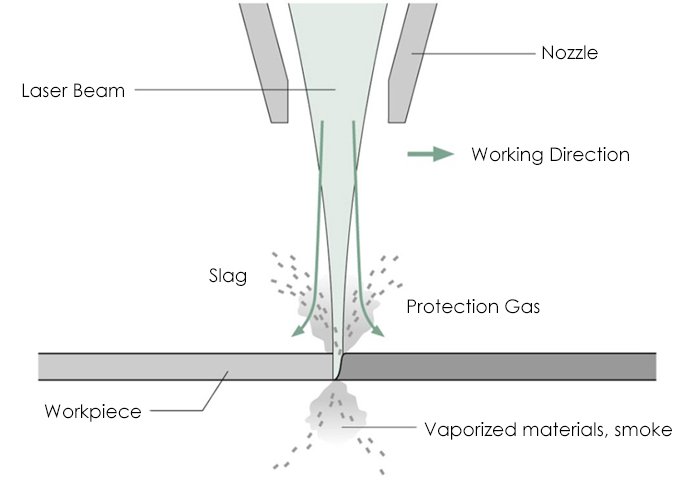
그림 3 가스화 절단: 레이저는 재료를 증발 및 연소시킵니다. 증기의 압력으로 절개 부위에서 슬래그를 배출합니다.
몇 가지 매개 변수가 레이저 커팅 프로세스레이저 제너레이터와 레이저 커팅기의 기술적 성능에 따라 달라지는 것도 있고, 조정 가능한 것도 있습니다.
편광 정도는 변환되는 레이저의 백분율을 나타냅니다.
일반적으로 편광의 정도는 약 90%로, 고품질 커팅을 달성하기에 충분합니다.
초점 직경은 절개 폭에 영향을 미치며 초점 렌즈의 초점 거리를 변경하여 수정할 수 있습니다. 초점 직경이 작을수록 절개 폭이 좁아집니다.
초점 위치에 따라 빔 직경, 출력 밀도 및 공작물 표면의 절개 모양이 결정됩니다.

Fi.4 초점 위치: 공작물의 내부, 표면 및 위쪽.
그리고 레이저 파워 는 가공 유형, 재료 유형 및 두께와 일치해야 합니다.
작업물의 전력 밀도가 처리 임계값을 초과할 수 있을 정도로 전력이 충분히 높아야 합니다.

그림 5 레이저 출력이 높을수록 더 두꺼운 재료를 절단할 수 있습니다.
연속 모드는 주로 밀리미터에서 센티미터 두께의 금속 및 플라스틱의 표준 윤곽을 절단하는 데 사용됩니다.
구멍을 녹이거나 정확한 윤곽을 만들기 위해 저주파 펄스 레이저가 사용됩니다.
레이저 출력과 절단 속도는 서로 일치해야 합니다. 절단 속도가 너무 빠르거나 너무 느리면 거칠기 및 버 형성.
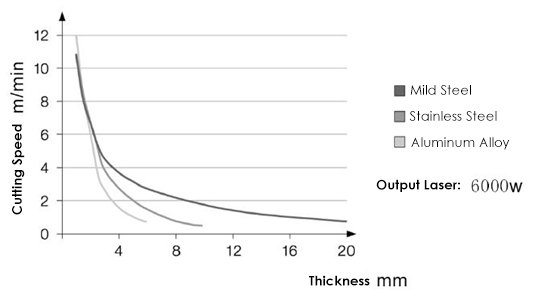
그림 6 판재의 두께에 따라 절단 속도가 감소합니다.
노즐 직경에 따라 가스 흐름과 노즐에서 나오는 공기 흐름의 모양이 결정됩니다.
재료가 두꺼울수록 가스 분사의 직경이 커지므로 노즐 입구의 직경도 커집니다.
절단 가스로는 일반적으로 산소와 질소가 사용됩니다.
가스의 순도와 압력은 절단 효과에 영향을 미칩니다.
산소 불꽃으로 절단할 때 가스 순도는 99.95%여야 합니다.
두께가 두꺼울수록 강판로 설정할수록 필요한 가스 압력이 낮아집니다.
질소로 절단할 때 가스 순도는 99.995%(이상적으로는 99.999%)여야 하며, 두꺼운 강판을 녹이고 절단할 때는 더 높은 압력이 필요합니다.
레이저 커팅의 초기 단계에서 사용자는 테스트 작업을 통해 가공 파라미터를 결정해야 합니다.
오늘날에는 각 재료 유형과 두께에 해당하는 데이터가 커팅 시스템의 제어 장치에 저장되어 있습니다.
기술 파라미터를 통해 기술에 정통하지 않은 개인도 레이저 절단 장비를 원활하게 작동할 수 있습니다.
몇 가지 기준에 따라 레이저 커팅 엣지의 품질이 결정됩니다.
예를 들어, 버 형성, 처짐 및 입자의 표준은 육안으로 평가할 수 있습니다.
그리고 직진성절개 부위, 거칠기, 절개 폭은 전문 장비를 사용하여 측정해야 합니다.
재료 증착, 부식, 열 영향 영역, 변형도 레이저 커팅 품질을 평가할 때 고려해야 할 중요한 요소입니다.
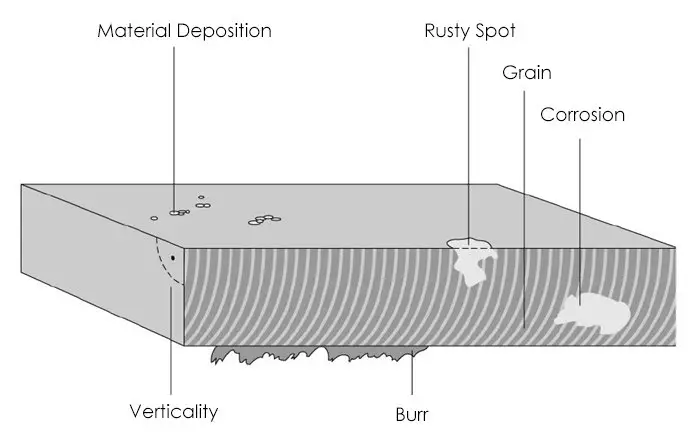
그림 7 좋은 절단, 나쁜 절단
레이저 커팅의 지속적인 성공은 대부분의 다른 기술과 비교할 수 없으며, 이러한 추세는 오늘날에도 지속되고 있습니다. 앞으로는 레이저 커팅의 응용 분야 는 점점 더 유망해질 것입니다.



